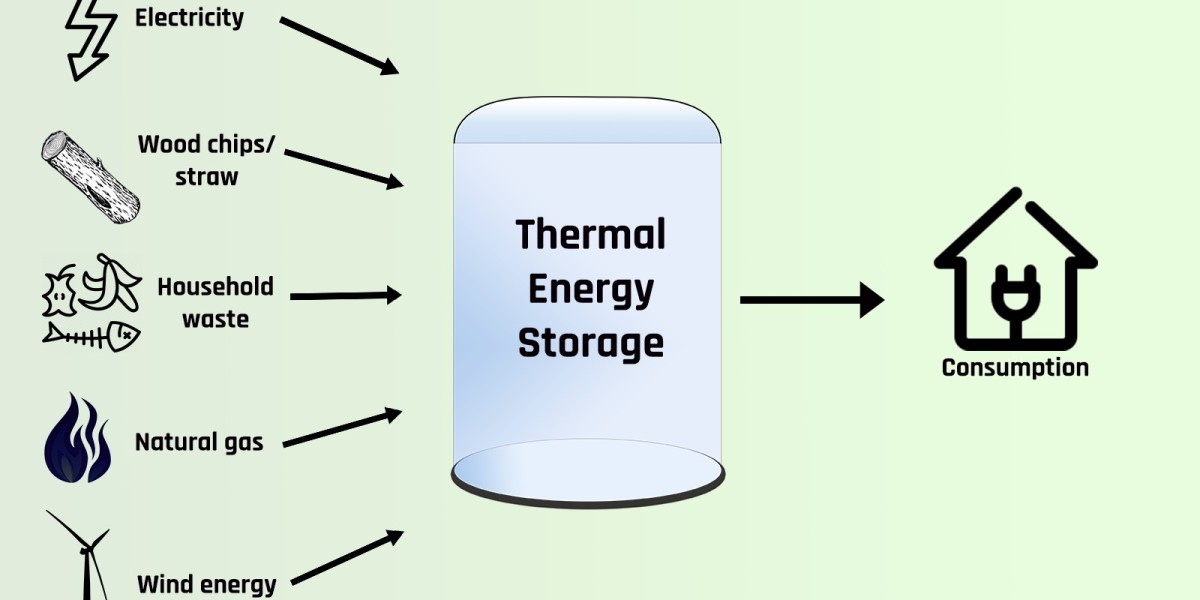Introduction
Thermal energy storage (TES) involves capturing waste or excess heat from various sources and storing it for later use. As our reliance on renewable but intermittent energy sources like solar and wind power grows, TES plays a critical role in managing energy supply and demand. By storing heat produced during off-peak generation hours, TES helps meet heating and cooling needs even when the sun isn't shining or wind isn't blowing. Various TES technologies allow excess thermal energy to be effectively banked for hours, days or even seasons until it is required.
Different Methods of Thermal Energy Storage
There are several different methods used for energy storage depending on the temperature of storage and planned use of stored energy. Some common TES methods include:
Sensible Heat Storage - This involves increasing or decreasing the temperature of a storage medium like water, rocks, or phase change materials (PCMs). The storage capacity depends on the heat capacity of the storage material and temperature difference between charging and discharging. Aquifer energy storage and borehole energy storage use underground storage of hot or cold water.
Latent Heat Storage - It utilizes the heat released or absorbed during phase change of materials like melting and solidifying of PCMs. PCMs store and release a large amount of energy without much change in their temperature. Examples include paraffin wax, salts hydrates and biodiesel. They find usage in building insulation to regulate indoor air temperature.
Thermochemical Heat Storage - This innovative method relies on reversible chemical reactions that either release or absorb heat energy. Some potential thermochemical storage materials include calcium oxide, magnesium oxide and zeolites. The energy densities achieved through thermochemical reactions far exceed those of sensible and latent heat storage. However, the technology remains in early stages of development.
Applications of Thermal Energy Storage
TES plays a vital role in several industries and applications by enabling off-peak energy usage and demand response capabilities. Some key areas where TES is employed include:
- Power Generation - TES helps generate electricity even when the sun isn't shining by storing solar thermal energy in molten salt tanks. Concentrated solar power plants often rely on energy storage.
- District Heating and Cooling - Large-scale underground aquifer storage is used to provide heating and cooling to residential and commercial buildings from a central facility.
- Buildings - PCM wallboards, ceiling tiles and flooring help regulate indoor temperatures passively by absorbing and releasing thermal energy during heating and cooling cycles.
- Industry - Low-temperature waste heat from industrial processes like food processing can be stored in aquifers or boreholes for space and equipment heating purposes.
- Thermal Grids - Just like electrical grids, some cities are exploring district thermal grids that distribute stored heat energy from large centralized storage units to buildings.
Advantages and Challenges of Thermal Energy Storage
TES provides multiple advantages when integrated with renewable or waste heat sources. It improves overall energy efficiency by enabling off-peak operation of systems. Power plants and buildings using TES see reduced running costs as they avoid daytime peak rates for electricity. TES also helps increase the capacity factor and utilization of renewable energy installations. However, the high upfront capital costs and lack of economies of scale have limited widespread commercialization of some technologies. Significant research continues on safety, reliability and cost reduction of different TES methods. Achieving cost parity with direct energy usage remains a hurdle, though TES' role in ensuring grid stability makes it indispensable going forward.
Conclusion
As the world transitions to renewable and sustainable energy sources, energy storage will play an increasingly important function. By decoupling energy generation from consumption, TES allows solar and waste heat to be captured and utilized efficiently regardless of timing. This flexibility strengthens energy security by creating efficient buffers between supply and demand. With falling technology costs and supportive policies, energy storage capacity is set to multiply substantially in the coming decades across power plants, buildings and entire cities. Combined with smart grids and renewable growth, TES can help create resilient, low-carbon energy systems of the future.










